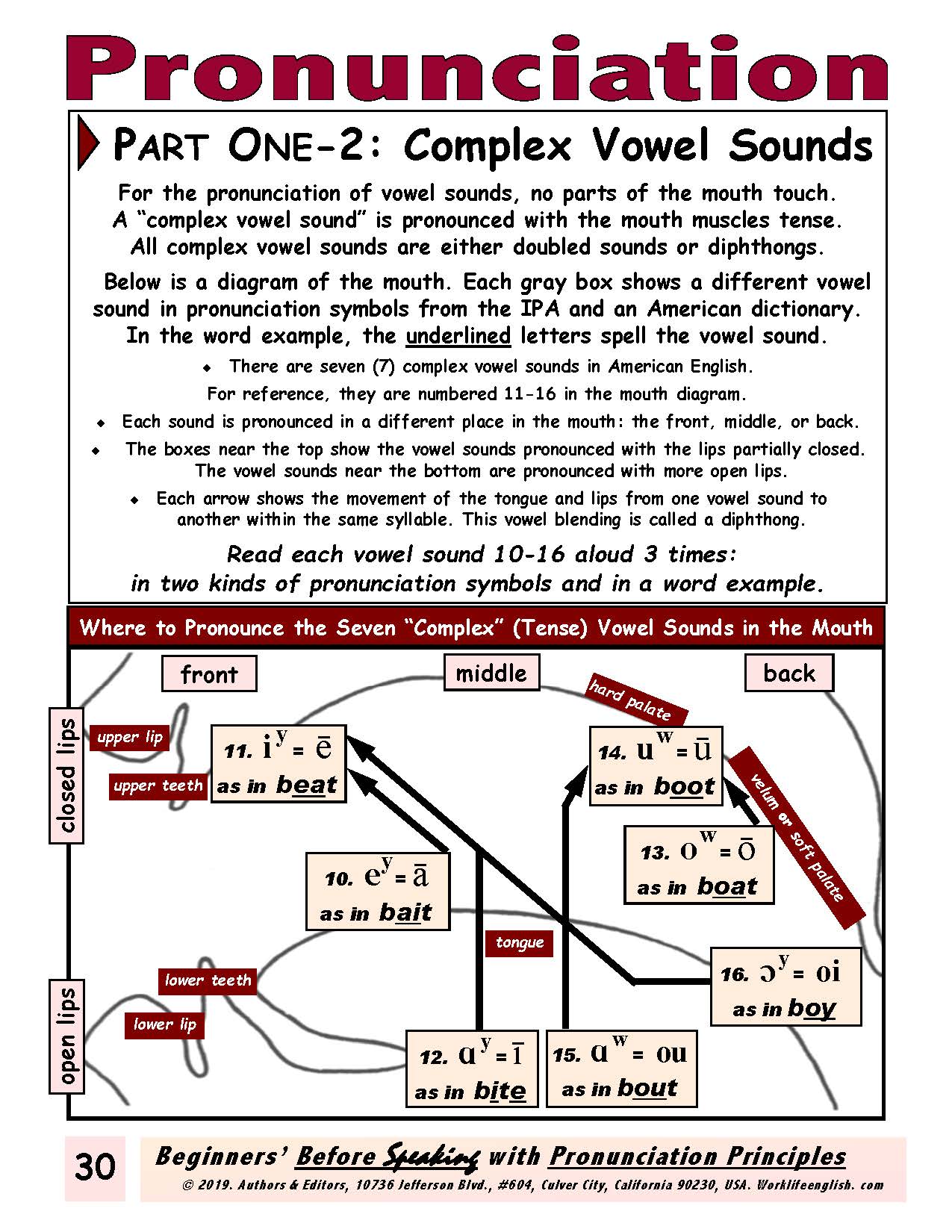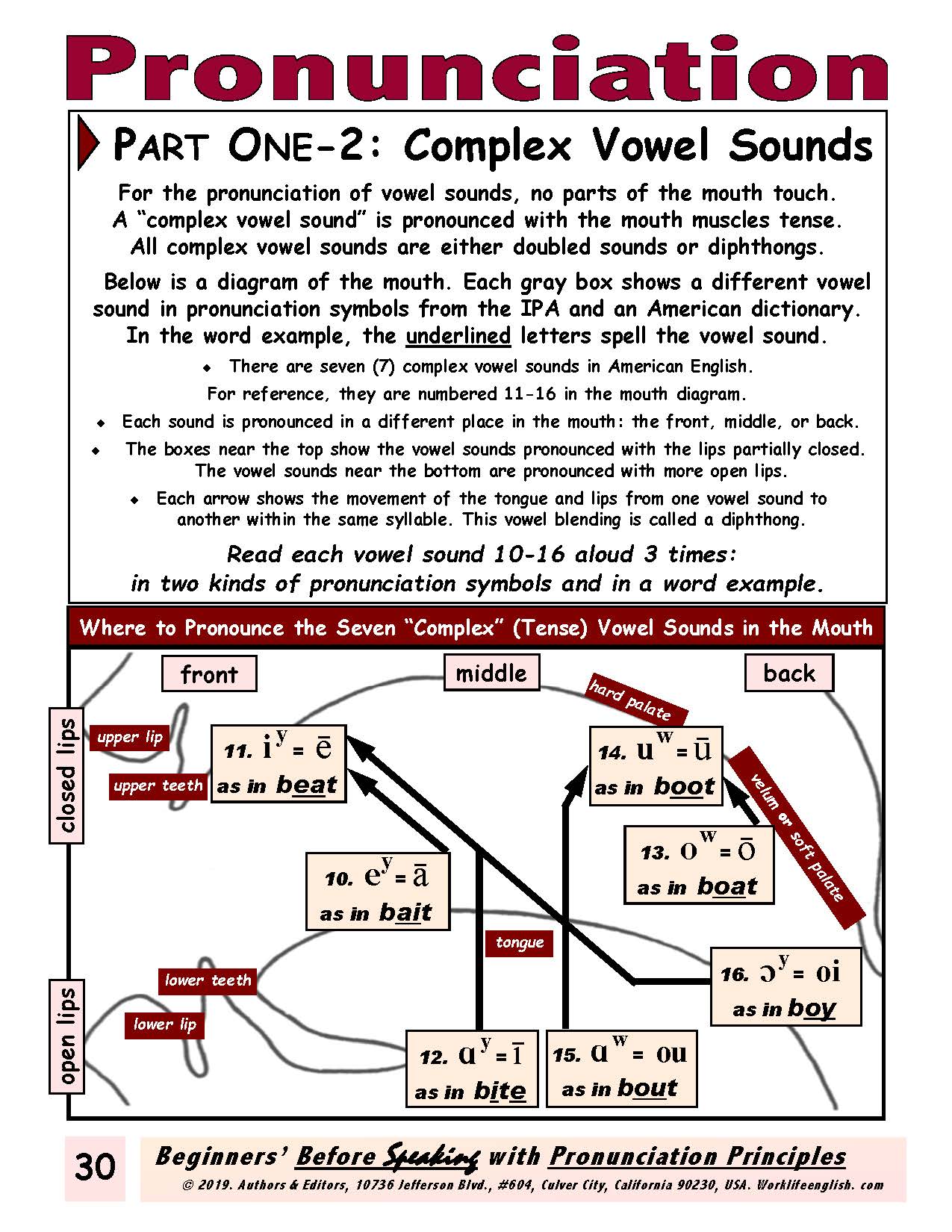1
/
of
1
Work/Life English
E-01.04 Focused on Complex Vowel Sounds, Describe Singular & Plural Items
E-01.04 Focused on Complex Vowel Sounds, Describe Singular & Plural Items
Regular price
$3.00 USD
Regular price
Sale price
$3.00 USD
Unit price
/
per
Part One-2 (Describe Items with Complex Vowel Sounds & Spellings): Talk About Things, from Beginners’ Before Speaking with Pronunciation Principles, pages 30-39 + Suggested Responses to Conversation Activities on pages 6-9 of the BegBeSp wPrPr Answer Key.
10 + 4 (14 )Pages
Who It’s For: American-English Teachers & Helpers of Beginners Who Want to Practice Accurate Pronunciation of Complex Vowel Sounds while Describing Items in Detail
Why It’s Useful: After focusing on Simple (Lax, One-Letter) Vowels while “Talking About Things,” newcomers to instruction in spoken American English will probably proceed to Complex Vowel Sounds & Spellings. Also called “Tense Vowels” or “Diphthongs,” these (more easily enunciated) doubled sounds are often spelled by combinations of letters like ay or ai, ee or ea, ie, oa, oo, ow or ou, oy or oi—or by the letters a, e, i, o, u in words with final silent –e. This segment shows and tells how to say (and spell) useful singular and plural nouns and Adjectives to describe them with. There’s practice in (illustrated) Grids, Conversations, and cued Activities that simulate actuality.
What You’ll Do:
[1] Page 30 re-presents the “Vowel-Articulation Mouth Diagram,” this time indicating (movement of) mouth parts for seven Complex Vowels 11-16. Use it to practice perception + production of—and discrimination among—the sounds / ey = ª. iy = Â. ay = Ì. ow= Ü. uw = ñ. Aw= ou. Oy= oi /. Because these (numbered for easy reference) Sounds are shown with both symbols and letters (in Key Words), the Infographic can function as a versatile teaching/learning tool.
[2] Next comes instruction in how the lips look when forming Sounds 10-16—and how to spell them—an undertaking well worth attention by developing English-language speakers. Text users pronounce illustrated Noun Phrases, (fill in letters for more Adjectives,) and repeat or practice simulated Conversation exemplifying detailed Item Description.
[3] On pages 37-39 of Part One-2, participants get Vocabulary Cues for differentiation of pictured (and real) objects in regard to Dimensions, Shape, Texture, Smell & Taste. Especially when referring to suggested language in the attached four pages of Answers to Text Exercises in BegBeSp wPrPr, perhaps using it for modeling, they’ll get to go well beyond novice speaking levels in precise physical description.
Couldn't load pickup availability


